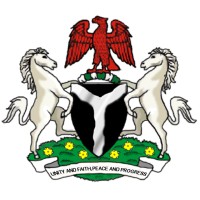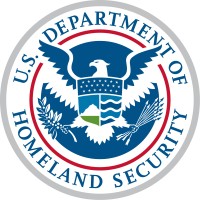
Puolustusministeriö - Försvarsministeriet - Ministry of Defence of Finland Company Cyber Security Posture
defmin.fiAs part of the Finnish Government and the relevant ministry providing guidelines for defence administration, the Ministry of Defence is responsible for national defence policy and security as well as international defence policy cooperation. Further responsibilities of the Ministry of Defence include providing resources for military national defence and securing operational requirements for the Defence Forces, overseeing Finland’s participation in international crisis-management and contributing to European security structures to secure national interests. The Ministry of Defence is a civilian organisation. The staff numbers about 130; one-half of the staff is women and approximately 20 employees of the entire staff have a military background. The average age is around 47 years. As to the educational background, most employees hold a college or university degree or a diploma in higher education or secondary education. About 70% are college or university graduates with a degree in political science, law, arts, military sciences or business studies.
P-F-MDF Company Details
finnish-ministry-of-defence
107 employees
15854
922
Government Administration
defmin.fi
Scan still pending
PUO_1328556
In-progress
Between 900 and 1000
This score is AI-generated and less favored by cyber insurers, who prefer the TPRM score.
 P-F-MDF Global Score
P-F-MDF Global Score.png)

Puolustusministeriö - Försvarsministeriet - Ministry of Defence of Finland Company Scoring based on AI Models
| Model Name | Date | Description | Current Score Difference | Score |
|---|---|---|---|---|
| AVERAGE-Industry | 03-12-2025 | This score represents the average cybersecurity rating of companies already scanned within the same industry. It provides a benchmark to compare an individual company's security posture against its industry peers. | N/A | Between 900 and 1000 |
Puolustusministeriö - Försvarsministeriet - Ministry of Defence of Finland Company Cyber Security News & History
| Entity | Type | Severity | Impact | Seen | Url ID | Details | View |
|---|---|---|---|---|---|---|---|
| Puolustusministeriö - Försvarsministeriet - Ministry of Defence of Finland | Cyber Attack | 100 | 9 | 04/2022 | PUO0317522 | Link | |
Rankiteo Explanation : Attack that could bring to a warDescription: The website of Ministry of Defense of Finland suffered a cyber attacks at the time Ukraininan President was speaking to the Finnish Parliament. The cyberattack was a denial-of-service attack, which aims to shut down a website so users are unable to access its information and the attack also affected the Finnish foreign ministry’s website. The websites were soon restored, but the attack was considered a consequence of Finland reconsidering its stance on NATO membership amid Ukraine-Russia war. | |||||||
Puolustusministeriö - Försvarsministeriet - Ministry of Defence of Finland Company Subsidiaries

As part of the Finnish Government and the relevant ministry providing guidelines for defence administration, the Ministry of Defence is responsible for national defence policy and security as well as international defence policy cooperation. Further responsibilities of the Ministry of Defence include providing resources for military national defence and securing operational requirements for the Defence Forces, overseeing Finland’s participation in international crisis-management and contributing to European security structures to secure national interests. The Ministry of Defence is a civilian organisation. The staff numbers about 130; one-half of the staff is women and approximately 20 employees of the entire staff have a military background. The average age is around 47 years. As to the educational background, most employees hold a college or university degree or a diploma in higher education or secondary education. About 70% are college or university graduates with a degree in political science, law, arts, military sciences or business studies.
Access Data Using Our API

Get company history
.png)
P-F-MDF Cyber Security News
Ingram Micro Issues Statement Regarding Cybersecurity Incident
Ingram Micro recently identified ransomware on certain of its internal systems. Promptly after learning of the issue, the Company took steps to ...
Qantas attack reveals one phone call is all it takes to crack cybersecurity’s weakest link: humans
Other sectors also at risk from attacks, including healthcare, finance and telecommunications, expert warns.
3 Top Cybersecurity Stocks to Buy in July
Three of the best cybersecurity stocks you can buy in July are Check Point Software Technologies (CHKP 1.93%), International Business Machines ( ...
Cyber Alert Karnataka: Cybersecurity Deficit Exposed as Attacks Surge
Digital Safety India: Karnataka faces Rs 2915 crore in cybercrime losses in 2024, exposing major cybersecurity gaps across sectors.
TIKA leads cybersecurity education for Syrian professionals | Daily Sabah
With the increasing global importance of cybersecurity, TIKA and MAPS conducted a foundational-level cybersecurity training at Damascus ...
Brand Impersonation Scams Surge as Hackers Prey on Public Trust
Hackers are impersonating brands like PayPal and Apple to steal information and send malware, according to recent research by Cisco Talos.
How Sacramento transgender cybersecurity expert doubles as an activist | Opinion
A Black transgender cybersecurity expert & data scientist from the Capitol region, uses her skills & voice to advocate for LGBTQ+ rights ...
FBI Sounds Alarm As Airline Cyber Threats Escalate
The FBI warns that America's airlines are under cyberattack. As digital threats escalate, experts fear a coordinated hack could cripple ...
Ingram Micro Confirms Ransomware Attack, Working To Restore Systems To ‘Process And Ship Orders’
Bleeping Computer reported Saturday that Ingram Micro has been hit with a ransomware attack associated with the Safepay ransomware organization.

P-F-MDF Similar Companies

City of Seattle
As a city, Seattle is known as a progressive leader in technology, innovation, and the environment. As an employer, the City of Seattle is leading local government in environmental stewardship, green building, and social justice, making our City what it is today and shaping our future. Our employee

Federal Capital Territory Administration
The Federal Capital Territory Administration was created on December 31, 2004 following the scrapping of the Ministry of the Federal Capital Territory (MFCT). Seven new Mandate Secretariats were created for Education, Transport, Agriculture and Rural Development, Health and Human Services, Social d

Västra Götalandsregionen
Region Västra Götaland is governed by democratically elected politicians and with just over 50,000 employees is one of Sweden’s biggest employers. It is tasked with offering good healthcare and dental care and providing the prerequisites for good public health, a rich cultural life, a good enviro

eThekwini Municipality
EThekwini Municipality is a Metropolitan Municipality found in the South African province of KwaZulu-Natal. Home to the world-famous city of Durban. EThekwini is the largest City in the province and the third largest city in the country. It is a sophisticated cosmopolitan city of over 3 468 088 peop

Department for Education
Help us achieve world-class education, training and care for everyone, whatever their background. Whether you're just starting out, or an experienced professional, we have what you are looking for. Jobs include administration, policy advisers, digital, finance, commercial specialists and many more

U.S. Department of Homeland Security
The Department of Homeland Security (DHS) has a vital mission: to secure the nation from the many threats we face. This requires the hard work of more than 260,000 employees in jobs that range from aviation and border security to emergency response, from cybersecurity analyst to chemical facility in

Frequently Asked Questions (FAQ) on Cybersecurity Incidents
P-F-MDF CyberSecurity History Information
Total Incidents: According to Rankiteo, P-F-MDF has faced 1 incidents in the past.
Incident Types: The types of cybersecurity incidents that have occurred include ['Cyber Attack'].
Total Financial Loss: The total financial loss from these incidents is estimated to be {total_financial_loss}.
Cybersecurity Posture: The company's overall cybersecurity posture is described as As part of the Finnish Government and the relevant ministry providing guidelines for defence administration, the Ministry of Defence is responsible for national defence policy and security as well as international defence policy cooperation. Further responsibilities of the Ministry of Defence include providing resources for military national defence and securing operational requirements for the Defence Forces, overseeing Finland’s participation in international crisis-management and contributing to European security structures to secure national interests. The Ministry of Defence is a civilian organisation. The staff numbers about 130; one-half of the staff is women and approximately 20 employees of the entire staff have a military background. The average age is around 47 years. As to the educational background, most employees hold a college or university degree or a diploma in higher education or secondary education. About 70% are college or university graduates with a degree in political science, law, arts, military sciences or business studies..
Detection and Response: The company detects and responds to cybersecurity incidents through {description_of_detection_and_response_process}.
Incident Details
Incident 1: Ransomware Attack
Title: {Incident_Title}
Description: {Brief_description_of_the_incident}
Date Detected: {Detection_Date}
Date Publicly Disclosed: {Disclosure_Date}
Date Resolved: {Resolution_Date}
Type: {Type_of_Attack}
Attack Vector: {Attack_Vector}
Vulnerability Exploited: {Vulnerability}
Threat Actor: {Threat_Actor}
Motivation: {Motivation}
Incident 2: Data Breach
Title: {Incident_Title}
Description: {Brief_description_of_the_incident}
Date Detected: {Detection_Date}
Date Publicly Disclosed: {Disclosure_Date}
Date Resolved: {Resolution_Date}
Type: {Type_of_Attack}
Attack Vector: {Attack_Vector}
Vulnerability Exploited: {Vulnerability}
Threat Actor: {Threat_Actor}
Motivation: {Motivation}
Common Attack Types: As of now, the company has not encountered any reported incidents involving common cyberattacks.
Identification of Attack Vectors: The company identifies the attack vectors used in incidents through {description_of_identification_process}.
Impact of the Incidents
Incident 1: Ransomware Attack
Financial Loss: {Financial_Loss}
Data Compromised: {Data_Compromised}
Systems Affected: {Systems_Affected}
Downtime: {Downtime}
Operational Impact: {Operational_Impact}
Conversion Rate Impact: {Conversion_Rate_Impact}
Revenue Loss: {Revenue_Loss}
Customer Complaints: {Customer_Complaints}
Brand Reputation Impact: {Brand_Reputation_Impact}
Legal Liabilities: {Legal_Liabilities}
Identity Theft Risk: {Identity_Theft_Risk}
Payment Information Risk: {Payment_Information_Risk}
Incident 2: Data Breach
Financial Loss: {Financial_Loss}
Data Compromised: {Data_Compromised}
Systems Affected: {Systems_Affected}
Downtime: {Downtime}
Operational Impact: {Operational_Impact}
Conversion Rate Impact: {Conversion_Rate_Impact}
Revenue Loss: {Revenue_Loss}
Customer Complaints: {Customer_Complaints}
Brand Reputation Impact: {Brand_Reputation_Impact}
Legal Liabilities: {Legal_Liabilities}
Identity Theft Risk: {Identity_Theft_Risk}
Payment Information Risk: {Payment_Information_Risk}
Average Financial Loss: The average financial loss per incident is {average_financial_loss}.
Commonly Compromised Data Types: The types of data most commonly compromised in incidents are {list_of_commonly_compromised_data_types}.
Incident 1: Ransomware Attack
Entity Name: {Entity_Name}
Entity Type: {Entity_Type}
Industry: {Industry}
Location: {Location}
Size: {Size}
Customers Affected: {Customers_Affected}
Incident 2: Data Breach
Entity Name: {Entity_Name}
Entity Type: {Entity_Type}
Industry: {Industry}
Location: {Location}
Size: {Size}
Customers Affected: {Customers_Affected}
Response to the Incidents
Incident 1: Ransomware Attack
Incident Response Plan Activated: {Yes/No}
Third Party Assistance: {Yes/No}
Law Enforcement Notified: {Yes/No}
Containment Measures: {Containment_Measures}
Remediation Measures: {Remediation_Measures}
Recovery Measures: {Recovery_Measures}
Communication Strategy: {Communication_Strategy}
Adaptive Behavioral WAF: {Adaptive_Behavioral_WAF}
On-Demand Scrubbing Services: {On_Demand_Scrubbing_Services}
Network Segmentation: {Network_Segmentation}
Enhanced Monitoring: {Enhanced_Monitoring}
Incident 2: Data Breach
Incident Response Plan Activated: {Yes/No}
Third Party Assistance: {Yes/No}
Law Enforcement Notified: {Yes/No}
Containment Measures: {Containment_Measures}
Remediation Measures: {Remediation_Measures}
Recovery Measures: {Recovery_Measures}
Communication Strategy: {Communication_Strategy}
Adaptive Behavioral WAF: {Adaptive_Behavioral_WAF}
On-Demand Scrubbing Services: {On_Demand_Scrubbing_Services}
Network Segmentation: {Network_Segmentation}
Enhanced Monitoring: {Enhanced_Monitoring}
Incident Response Plan: The company's incident response plan is described as {description_of_incident_response_plan}.
Third-Party Assistance: The company involves third-party assistance in incident response through {description_of_third_party_involvement}.
Data Breach Information
Incident 2: Data Breach
Type of Data Compromised: {Type_of_Data}
Number of Records Exposed: {Number_of_Records}
Sensitivity of Data: {Sensitivity_of_Data}
Data Exfiltration: {Yes/No}
Data Encryption: {Yes/No}
File Types Exposed: {File_Types}
Personally Identifiable Information: {Yes/No}
Prevention of Data Exfiltration: The company takes the following measures to prevent data exfiltration: {description_of_prevention_measures}.
Handling of PII Incidents: The company handles incidents involving personally identifiable information (PII) through {description_of_handling_process}.
Ransomware Information
Incident 1: Ransomware Attack
Ransom Demanded: {Ransom_Amount}
Ransom Paid: {Ransom_Paid}
Ransomware Strain: {Ransomware_Strain}
Data Encryption: {Yes/No}
Data Exfiltration: {Yes/No}
Ransom Payment Policy: The company's policy on paying ransoms in ransomware incidents is described as {description_of_ransom_payment_policy}.
Data Recovery from Ransomware: The company recovers data encrypted by ransomware through {description_of_data_recovery_process}.
Regulatory Compliance
Incident 1: Ransomware Attack
Regulations Violated: {Regulations_Violated}
Fines Imposed: {Fines_Imposed}
Legal Actions: {Legal_Actions}
Regulatory Notifications: {Regulatory_Notifications}
Incident 2: Data Breach
Regulations Violated: {Regulations_Violated}
Fines Imposed: {Fines_Imposed}
Legal Actions: {Legal_Actions}
Regulatory Notifications: {Regulatory_Notifications}
Regulatory Frameworks: The company complies with the following regulatory frameworks regarding cybersecurity: {list_of_regulatory_frameworks}.
Ensuring Regulatory Compliance: The company ensures compliance with regulatory requirements through {description_of_compliance_measures}.
Lessons Learned and Recommendations
Incident 1: Ransomware Attack
Lessons Learned: {Lessons_Learned}
Incident 2: Data Breach
Lessons Learned: {Lessons_Learned}
Incident 1: Ransomware Attack
Recommendations: {Recommendations}
Incident 2: Data Breach
Recommendations: {Recommendations}
Key Lessons Learned: The key lessons learned from past incidents are {list_of_key_lessons_learned}.
Implemented Recommendations: The company has implemented the following recommendations to improve cybersecurity: {list_of_implemented_recommendations}.
References
Additional Resources: Stakeholders can find additional resources on cybersecurity best practices at {list_of_additional_resources}.
Investigation Status
Incident 1: Ransomware Attack
Investigation Status: {Investigation_Status}
Incident 2: Data Breach
Investigation Status: {Investigation_Status}
Communication of Investigation Status: The company communicates the status of incident investigations to stakeholders through {description_of_communication_process}.
Stakeholder and Customer Advisories
Incident 1: Ransomware Attack
Stakeholder Advisories: {Stakeholder_Advisories}
Customer Advisories: {Customer_Advisories}
Incident 2: Data Breach
Stakeholder Advisories: {Stakeholder_Advisories}
Customer Advisories: {Customer_Advisories}
Advisories Provided: The company provides the following advisories to stakeholders and customers following an incident: {description_of_advisories_provided}.
Initial Access Broker
Incident 1: Ransomware Attack
Entry Point: {Entry_Point}
Reconnaissance Period: {Reconnaissance_Period}
Backdoors Established: {Backdoors_Established}
High Value Targets: {High_Value_Targets}
Data Sold on Dark Web: {Yes/No}
Incident 2: Data Breach
Entry Point: {Entry_Point}
Reconnaissance Period: {Reconnaissance_Period}
Backdoors Established: {Backdoors_Established}
High Value Targets: {High_Value_Targets}
Data Sold on Dark Web: {Yes/No}
Monitoring and Mitigation of Initial Access Brokers: The company monitors and mitigates the activities of initial access brokers through {description_of_monitoring_and_mitigation_measures}.
Post-Incident Analysis
Incident 1: Ransomware Attack
Root Causes: {Root_Causes}
Corrective Actions: {Corrective_Actions}
Incident 2: Data Breach
Root Causes: {Root_Causes}
Corrective Actions: {Corrective_Actions}
Post-Incident Analysis Process: The company's process for conducting post-incident analysis is described as {description_of_post_incident_analysis_process}.
Corrective Actions Taken: The company has taken the following corrective actions based on post-incident analysis: {list_of_corrective_actions_taken}.
Additional Questions
General Information
Ransom Payment History: The company has {paid/not_paid} ransoms in the past.
Last Ransom Demanded: The amount of the last ransom demanded was {last_ransom_amount}.
Last Attacking Group: The attacking group in the last incident was {last_attacking_group}.
Incident Details
Most Recent Incident Detected: The most recent incident detected was on {most_recent_incident_detected_date}.
Most Recent Incident Publicly Disclosed: The most recent incident publicly disclosed was on {most_recent_incident_publicly_disclosed_date}.
Most Recent Incident Resolved: The most recent incident resolved was on {most_recent_incident_resolved_date}.
Impact of the Incidents
Highest Financial Loss: The highest financial loss from an incident was {highest_financial_loss}.
Most Significant Data Compromised: The most significant data compromised in an incident was {most_significant_data_compromised}.
Most Significant System Affected: The most significant system affected in an incident was {most_significant_system_affected}.
Response to the Incidents
Third-Party Assistance in Most Recent Incident: The third-party assistance involved in the most recent incident was {third_party_assistance_in_most_recent_incident}.
Containment Measures in Most Recent Incident: The containment measures taken in the most recent incident were {containment_measures_in_most_recent_incident}.
Data Breach Information
Most Sensitive Data Compromised: The most sensitive data compromised in a breach was {most_sensitive_data_compromised}.
Number of Records Exposed: The number of records exposed in the most significant breach was {number_of_records_exposed}.
Ransomware Information
Highest Ransom Demanded: The highest ransom demanded in a ransomware incident was {highest_ransom_demanded}.
Highest Ransom Paid: The highest ransom paid in a ransomware incident was {highest_ransom_paid}.
Regulatory Compliance
Highest Fine Imposed: The highest fine imposed for a regulatory violation was {highest_fine_imposed}.
Most Significant Legal Action: The most significant legal action taken for a regulatory violation was {most_significant_legal_action}.
Lessons Learned and Recommendations
Most Significant Lesson Learned: The most significant lesson learned from past incidents was {most_significant_lesson_learned}.
Most Significant Recommendation Implemented: The most significant recommendation implemented to improve cybersecurity was {most_significant_recommendation_implemented}.
References
Most Recent Source: The most recent source of information about an incident is {most_recent_source}.
Most Recent URL for Additional Resources: The most recent URL for additional resources on cybersecurity best practices is {most_recent_url}.
Investigation Status
Current Status of Most Recent Investigation: The current status of the most recent investigation is {current_status_of_most_recent_investigation}.
Stakeholder and Customer Advisories
Most Recent Stakeholder Advisory: The most recent stakeholder advisory issued was {most_recent_stakeholder_advisory}.
Most Recent Customer Advisory: The most recent customer advisory issued was {most_recent_customer_advisory}.
Initial Access Broker
Most Recent Entry Point: The most recent entry point used by an initial access broker was {most_recent_entry_point}.
Most Recent Reconnaissance Period: The most recent reconnaissance period for an incident was {most_recent_reconnaissance_period}.
Post-Incident Analysis
Most Significant Root Cause: The most significant root cause identified in post-incident analysis was {most_significant_root_cause}.
Most Significant Corrective Action: The most significant corrective action taken based on post-incident analysis was {most_significant_corrective_action}.
What Do We Measure?
















Every week, Rankiteo analyzes billions of signals to give organizations a sharper, faster view of emerging risks. With deeper, more actionable intelligence at their fingertips, security teams can outpace threat actors, respond instantly to Zero-Day attacks, and dramatically shrink their risk exposure window.
These are some of the factors we use to calculate the overall score:
Identify exposed access points, detect misconfigured SSL certificates, and uncover vulnerabilities across the network infrastructure.
Gain visibility into the software components used within an organization to detect vulnerabilities, manage risk, and ensure supply chain security.
Monitor and manage all IT assets and their configurations to ensure accurate, real-time visibility across the company's technology environment.
Leverage real-time insights on active threats, malware campaigns, and emerging vulnerabilities to proactively defend against evolving cyberattacks.




